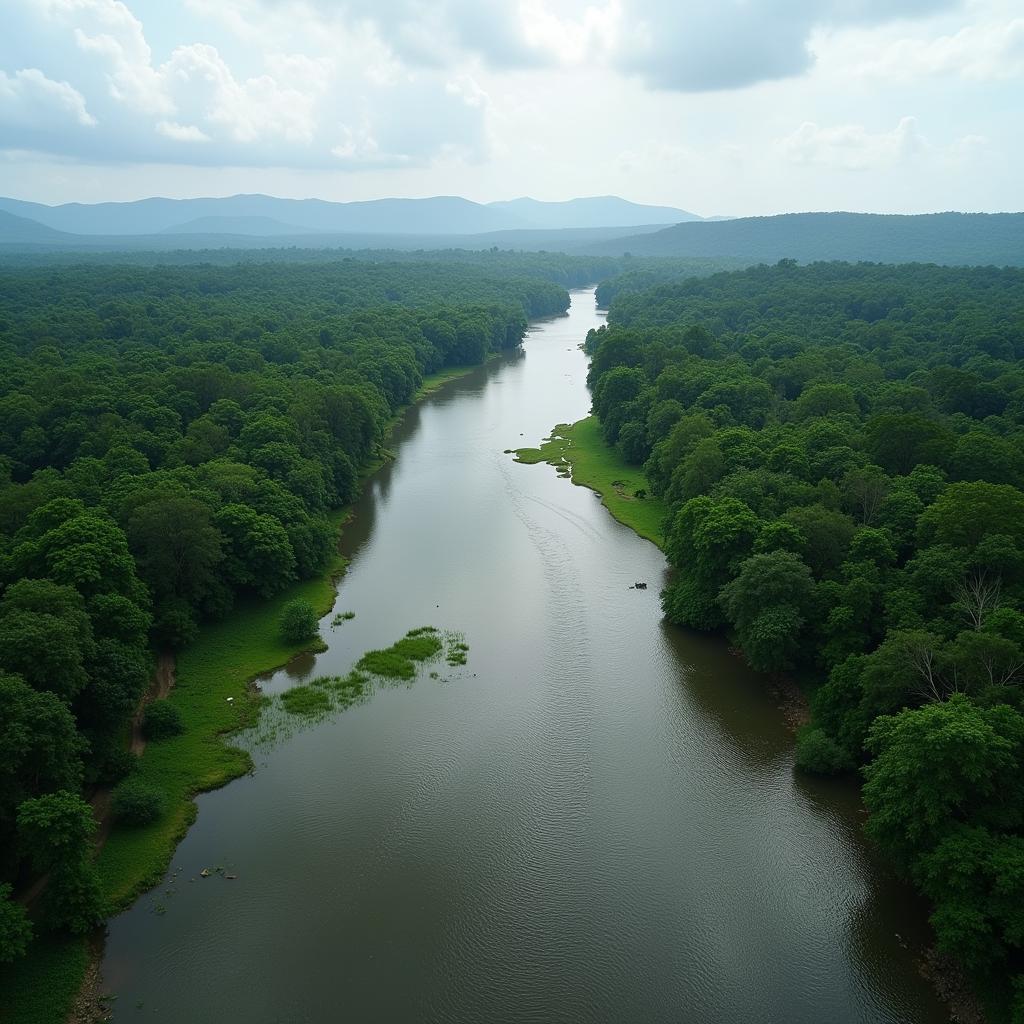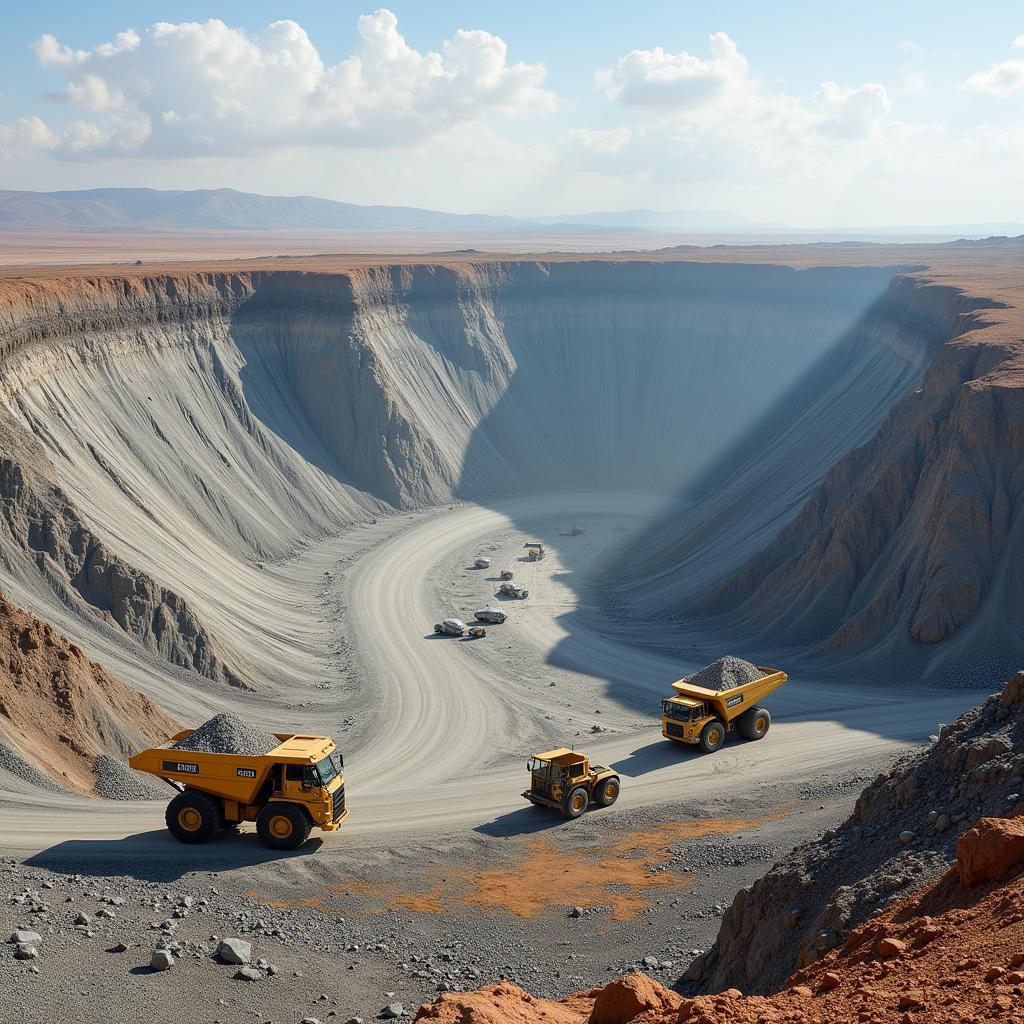African Countries by Land Mass
Africa, a continent renowned for its diverse cultures, breathtaking landscapes, and rich history, is also home to a fascinating array of countries, each with its own unique story to tell. Understanding the sheer scale of this magnificent continent can be a journey in itself. In this article, we’ll delve into the fascinating world of “African Countries By Land Mass,” exploring the geographical giants and hidden gems that make up this extraordinary part of the world.
The Top 5 Largest African Countries
When we rank African countries by land mass, a few giants emerge at the top, dwarfing many European nations combined. Let’s take a closer look at these geographical titans:
-
Algeria: Claiming the title of the largest country in Africa, Algeria sprawls across North Africa, covering a staggering 2,381,741 square kilometers (919,595 square miles). From the sun-drenched sands of the Sahara Desert to the fertile coastal plains along the Mediterranean Sea, Algeria’s landscape is as diverse as its rich cultural tapestry.
-
Democratic Republic of the Congo (DRC): A country of immense natural resources and breathtaking beauty, the DRC comes in second with an area of 2,344,858 square kilometers (905,355 square miles). The Congo River, the second-longest river in Africa, snakes its way through the heart of the country, connecting diverse ecosystems and cultures.
 Congo River
Congo River
-
Sudan: Occupying a vast expanse of North Africa, Sudan stretches over 1,886,068 square kilometers (728,215 square miles). From the ancient pyramids and temples of the north to the fertile lands of the south, Sudan’s history and culture are as vast as its territory.
-
Libya: Located on the northern coast of Africa, Libya covers an area of 1,759,540 square kilometers (679,362 square miles). Known for its vast desert landscapes and ancient Roman ruins, Libya offers a glimpse into a land shaped by both nature and history.
-
Chad: A landlocked country in Central Africa, Chad encompasses an area of 1,284,000 square kilometers (495,755 square miles). Home to the Ennedi Massif, a stunning sandstone plateau, and Lake Chad, once one of Africa’s largest lakes, Chad offers a glimpse into the continent’s diverse landscapes and ecological wonders.
The Smaller Side of Africa: Island Nations and Micro-States
While the giants dominate the list, Africa is also home to a fascinating collection of smaller nations, each with its own unique charm and allure. From the enchanting islands of Seychelles and Mauritius to the tiny kingdom of Lesotho, these countries prove that size isn’t everything.
-
Seychelles: This archipelago of 115 islands in the Indian Ocean is a tropical paradise, renowned for its pristine beaches, turquoise waters, and unique biodiversity.
-
Mauritius: Another island nation in the Indian Ocean, Mauritius captivates visitors with its lush rainforests, volcanic peaks, and vibrant culture.
-
Lesotho: Completely surrounded by South Africa, the Kingdom of Lesotho is a landlocked country known for its mountainous terrain and distinctive Basotho culture.
What Factors Influence the Size of African Countries?
The vast differences in land area among African countries can be attributed to a complex interplay of historical, geographical, and political factors.
-
Colonial History: The arbitrary borders drawn during the colonial era played a significant role in shaping the size and shape of many African nations.
-
Geographical Features: Natural barriers, such as deserts, mountains, and rivers, have influenced population distribution and, consequently, the boundaries of some countries.
-
Political Boundaries: Political agreements, treaties, and conflicts have also contributed to the current configuration of African countries.
Beyond Size: Exploring the Diversity of Africa
While understanding the land mass of African countries provides a valuable perspective on the continent’s geography, it’s essential to remember that Africa is much more than just its size. From the bustling medinas of Marrakech to the wildlife-rich savannas of the Serengeti, Africa’s true essence lies in its vibrant cultures, diverse ecosystems, and the warmth and resilience of its people.
FAQs:
1. Which African country has the longest coastline?
Somalia boasts the longest coastline in mainland Africa, stretching over 3,025 kilometers (1,880 miles).
2. What is the smallest country in Africa by land mass?
The Seychelles, an archipelago of islands, holds the title of the smallest country in Africa by landmass, covering a mere 455 square kilometers (176 square miles).
3. Which African country is closest to Europe?
Morocco, situated in North Africa, is separated from Spain by the Strait of Gibraltar, making it the closest African country to Europe.
Exploring Further
For more fascinating insights into the diversity of Africa, be sure to check out these articles:
- African Includes: Delve deeper into the cultural tapestry of the continent.
- African Buffalo Download: Discover the captivating wildlife that roams Africa’s plains.
Need Assistance?
If you have any questions or need further assistance planning your African adventure, our dedicated team is here to help. Contact us via:
Phone: +255768904061
Email: [email protected]
Visit us: Mbarali DC Mawindi, Kangaga, Tanzania.
Our customer care representatives are available 24/7 to assist you.


